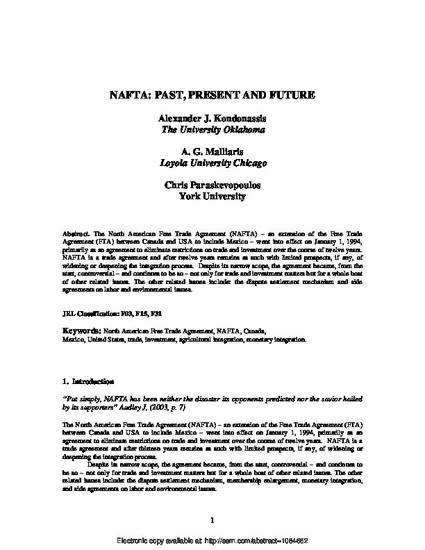
The North American Free Trade Agreement (NAFTA) – an extension of the Free Trade Agreement (FTA) between Canada and USA to include Mexico – went into effect on January 1, 1994, primarily as an agreement to eliminate restrictions on trade and investment over the course of twelve years. NAFTA is a trade agreement and after twelve years remains as such with limited prospects, if any, of widening or deepening the integration process. Despite its narrow scope, the agreement became, from the start, controversial – and continues to be so – not only for trade and investment matters but for a whole host of other related issues. The other related issues include: the dispute settlement mechanism and side agreements on labor and environmental issues.
© Elsevier B. V. 2008
Available at: http://works.bepress.com/atassos-malliaris/12/

Author Posting. © Elsevier B. V. 2008. This is the authors' version of the work. It is posted here by permission of The Journal of Economic Asymmetries for personal use, not for redistribution. The definitive version was published in The Journal of Economic Asymmetries, vol. 5, no. 1, 2008, http://www.sciencedirect.com/science/article/pii/S1703494915303273#!